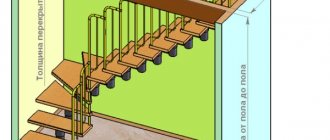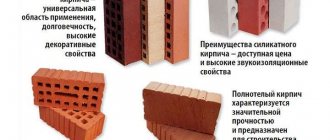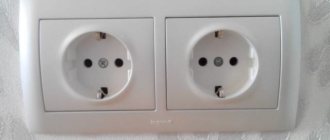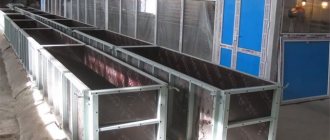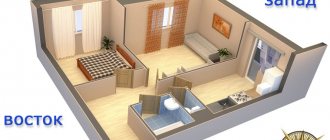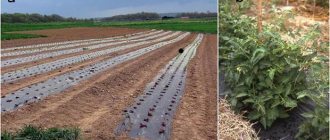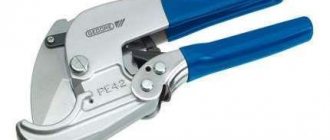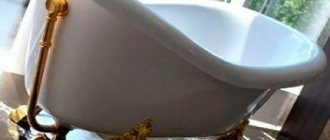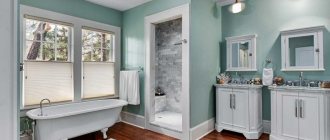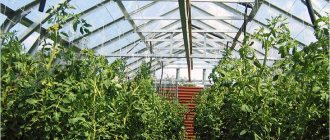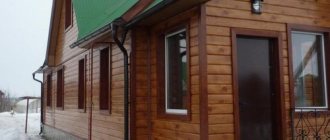Increasing the thermal protection of a private house during construction is an important stage of work, while significant volumes are insulated, and the cost of thermal insulation materials becomes the decisive factor. One of the popular inexpensive types of heat insulators is Izover insulation, the technical characteristics of which are excellent for use in individual housing construction.
It should be noted that Isover is a modern, more technologically advanced version of classic glass wool, which was widely used during the Soviet period for thermal insulation of utility pipelines for heating and hot water supply systems. Isover is produced in several modifications depending on the purpose; each brand in the series has different parameters and differs in installation methods. Knowledge of the characteristics and varieties of Izover will help you choose the right product without overpayments, install it in compliance with the technological process, which is the main requirement when installing any type of insulation.
Izover - appearance
What is Isover, release forms
The founder of the Isover brand is the international holding Saint-Gobain, whose roots were laid back in the 17th century. Currently, the corporation includes more than 100 manufacturing companies and research centers conducting research in the construction industry. The company appeared on the Russian market 20 years ago; currently, a plant for the production of insulation operates in Yegoryevsk, Moscow region. In 2011, the Saint-Gobain holding bought the Chelyabinsk Minervata plant, and it began producing insulation materials from rock basalt fibers.
Isover is produced by processing sand (quartz), glass cullet, and mountain minerals (basalt); after melting the raw materials in a high-temperature furnace, the mass is drawn into fibers using TEL technology to produce threads with a cross-section of 4 - 5 microns and 110 - 150 microns in length.
Note: Saint-Gobain is the only manufacturer in the country that has a patented crimping technology that allows it to produce fiberglass products with high mechanical strength.
Hard fiberglass is placed in slabs, soft fiber is rolled into mats and rolls; products differ in thickness and dimensional dimensions, depending on the purpose and production technology.
The typical thickness of a single-layer or two-layer Izover is 50 - 100 - 150 mm, rolls are produced with a total area of 2 - 20 m2, their usual width is 1200 mm, length from 4000 to 12000 mm. The area of one Isover slab does not exceed 1 m2, its overall dimensions are kept within the limits of 600x1200 mm, the number in a pack is from 2 to 14 pieces.
Places for insulation of a private house
Dimensions
Products are produced in various forms. These can be rolls, whose rigidity has differences and mats. The thickness of the single-layer material is offered at 5-10 centimeters. Each layer of two-layer insulation is 5 centimeters.
Dimensions
The width and length of the slabs usually have standard dimensions of 1 meter by 1 meter, but some manufacturers offer mats with other indicators. Rolled copies are produced in a standard width - 1.2 meters, but have differences in length - from 7 to 14 meters. The total area of one roll\ is produced from 16 to 20 m2.
Scope and characteristics of Izover
Fiberglass and mineral wool insulation materials are widely used in individual and civil housing construction; they are used to protect roofs, walls, ceilings, floors and partitions of cottages and country houses, baths and saunas from heat loss, and to insulate hot water supply pipes indoors for heating and hot water needs. water supply, thermally insulate ventilation ducts, chimneys.
Isover has the following characteristics:
- Is a brand that supplies rigid fiberglass boards with a tensile strength of 15 kPa and a compressive strength of 60 kPa.
- Mineral wool is produced from natural raw materials (quartz, basalt), therefore it is environmentally friendly and harmless to human health, it has been awarded the EcoMaterial Absolute environmental group and the international eco-friendly certificate ISO 14001:2004.
- The thermal conductivity coefficient (CT) depends on the shape of the product and lies in the range of 0.03 - 0.045 W/(m•K), this indicator for glass wool is slightly higher than for expanded polystyrene (foam) and basalt fiber.
- The vapor permeability of products is also related to the shape and has an indicator of 0.3 - 0.55 mg/m•h•Pa, this parameter indicates that the heat insulator allows air to pass through well.
- The noise reduction of a 100 mm sheet is 45 - 55 dB, which means that glass wool has high sound insulation.
- The moisture absorption coefficient of glass wool when partially immersed in water for 24 hours is 1% or 1 kg/m2; material completely immersed in liquid for 72 hours absorbs 10% of its weight in liquid, while its thermal insulation properties drop sharply. To combat this phenomenon, water repellents with water-repellent properties are introduced into the heat insulator.
- The density of Isover depends on the form of release (soft mats or hard sheets) and ranges from 11 to 155 kg/m3.
- Mineral wools are classified as non-flammable; in accordance with GOST 30244-94 they are assigned the flammability index NG.
- The service life of Isover mineral wool, established by the manufacturer, is 50 years without loss of its physical and chemical properties.
- Mineral wool is biologically stable, prevents the formation of mold and bacterial colonies; insects do not like to breed or be present in a mineral environment.
Laying options for Izover
Advantages and disadvantages
The positive qualities of insulation are directly related to its physical properties; the advantages of Isover include:
- The low cost of production, which gives tangible advantages over other insulation materials, is widely used in individual construction for thermal insulation of residential buildings, bathhouses, and outbuildings.
- Light weight and elasticity thanks to the Multipack technology create additional convenience during transportation; soft cotton wool in rolls is compressed during production, after unfolding it increases in volume by 5-6 times and completely restores its working shape.
- The manufacturer produces an extensive line of products in a wide price range, designed for various purposes; the consumer has the opportunity to choose between budget fiberglass and a more expensive basalt product.
- The physical properties and forms of mineral wool make it possible to use them for thermal insulation of any complex contours and planes: pipelines of various diameters, chimneys, ventilation ducts.
- It is convenient to work with insulation; thanks to its low weight and release form, significant volumes can be covered with rolls or sheets in a short time. Compared to traditional glass wool, the installation speed increases by 2 times due to the fact that additional fasteners are not required when laying in the frame.
- Mineral wool material not only provides thermal insulation, but also absorbs noise well, performing a double useful function; brands specifically designed for sound protection are sold in the retail chain.
- High elasticity due to advanced production technology ensures that the material does not shrink, maintaining unchanged thermal insulation characteristics throughout its service life.
In addition to many positive qualities, Isover has quite noticeable disadvantages:
- Since mineral wool absorbs moisture well, it cannot be used in objects with high humidity and underground. To protect against moist air, be sure to place a vapor barrier film under the insulation or ventilate the space between the shells of the thermal insulator and the object.
- When laid, budget soft mats require a rigid frame, otherwise they become deformed and cease to perform thermal insulation functions.
- When laying glass wool, you should use protective measures against fibers that have a negative effect on the eyes and mucous membrane of a person, irritate the skin, and cause itching.
- If glass wool is used for interior decoration, measures should be taken to ensure reliable sealing and insulation from the environment, otherwise small fibers of glass will penetrate into the room, causing discomfort.
- Some environmentalists doubt the environmental purity of mineral wool, pointing out that during their production, binding resins are added, which emit small amounts of formaldehyde that is harmful to health.
Technical characteristics of some brands
How and from what ISOVER mineral insulation is made | #IndustrialScale
Calculation
The main requirement for profitable and reliable sound insulation is correct calculation. Using laser measuring equipment, you can make calculations with maximum accuracy so as not to buy extra material. Of course, if you don’t have any skills or knowledge, then it’s better to entrust it to specialists who will calculate everything quickly and efficiently.
Photo: Using this table you can calculate the amount of material required. Author: Anfisa Palmova
You can carry out soundproofing with isover yourself if you have an understanding of the product and how to install it. As for the choice of sizes, it is necessary to select based on the characteristics of not only the room, but also the insulating layer. If possible, then for installation work it is better to invite a professional who, in just a few minutes, will make calculations on the thermal and sound insulation qualities of the house and the insulation itself.
Interesting! Many people believe that to obtain effective and reliable sound insulation, you need slabs or rolled sheets of large thickness. In fact, everything is not so radical. Despite the large selection of materials, it is worth taking a product with a thickness of no more than 10 centimeters. This is exactly what is needed to create comfortable conditions.
The same amount of material is selected depending on the size of the surface to be treated. It is important to take into account that during installation the slabs should not be pressed in too much. They should fit snugly, but you also don't want them to fall out. If the width of the soundproofing slab is 60 centimeters, then the distance between the logs or structural elements will be 56-58 millimeters.
Important! Not only the effectiveness of the insulation, but also the cost of soundproofing the house depends on the correctness of the calculation. There is no need to save on heat and sound insulation, because convenience and comfort inside an apartment or house depend on this.
Izover insulation marking
It is quite difficult to understand the markings that Saint-Gobain puts on its product; depending on the physical properties, the following symbolic and numerical designations are found:
- KT - flexible rolled mats with a density of about 15 kg/m3, used for insulation of joist floors, interfloor and ceilings, the KT37 variety has a thermal conductivity of 0.037 W/(m•K), KT40 - 0.040 W/(m•K). The KT brand is supplied in rolls with a thickness of 50 or 100 mm, the standard length of KT37 is 6300 mm, width is 600 mm (KT40 has dimensions of 7000x610 mm), the compression ratio of the roll is 1:4 (volume 0.16 m3 when packed and 0.71 m3 when packed). open).
- KL - slab heat insulator 50 or 100 mm thick with an average density of 20 kg/m3, designed for frame installation without fastening with dowels, parameters of the common brand KL34 - thermal conductivity 0.034 W/(m•K), vapor permeability - 0.53 mg/m•h •Pa, upon delivery the packaging is compressed twice, return after compression is 98%.
- RKL - rigid sheets reinforced on both sides with glass fiber, density 60 kg/m3 and thermal conductivity 0.030 W/(m•K), the RKLA variety has a tongue-and-groove connection and, during installation, serves as additional wind protection.
- SKL - semi-rigid sheets with a density of 55 kg/m3 and a thermal conductivity of 0.031 W/(m•K).
- RKL-EJ - sheets of increased rigidity, mounted using the ridge method with a density of 95 kg/m3 and CT 0.031 W/(m•K).
- VKL - rigid sheets with a density of 130 kg/m3 and a thermal conductivity of 0.032 W/(m•K).
Important: From the above digital marking, it is enough for the consumer to remember that the letter T means rolled material, and the symbol L indicates the plate, the digital designation is equal to the thermal conductivity indicator, the lower it is, the better the product retains heat.
The Russian-language Izover marking is often used, in which the symbol P means slabs, M - roll insulation, AL - reinforced foil covering, OL - fiberglass (fiberglass) base.
Product line, application features and characteristics of Isover
Isover, based on glass and basalt fibers, is produced for various purposes, so the products consist of almost three dozen items, each with its own profile name depending on the object being insulated. It is useful for a consumer who has decided to purchase Izover insulation to study its technical characteristics, look at the photo, find out prices on the manufacturer’s website, and master installation methods.
On the market, products are marked with markings indicating their physical parameters, and are also divided into areas of application to facilitate the buyer’s choice; when ordering a large batch, the company can supply the goods in the sizes specified by the customer.
Classic series parameters
Classic
This brand of Izover based on glass wool is available in two varieties: Classic in rolls and Classic Plate; when using a product from Saint-Gobain for thermal insulation of an individual house, heating costs can be reduced by up to 65% compared to an uninsulated building.
Izover Classic parameters:
- The slab is designed for thermal insulation of external walls, ceilings and interior partitions, provides double insulation against heat loss and noise interference, the rolled material is laid between the floor and attic joists.
- The CT of the slab insulator at 10 °C is 0.038 W/(m•K), at 25 °C - 0.41 W/(m•K), this indicator for thermal insulation properties with a mineral wool thickness of 50 mm is equivalent to 950 mm of a brick wall. Rolls and mats at similar ambient temperatures have a thermal conductivity of 0.041 - 0.044 W/(m•K), respectively.
- Density: 15 kg/m3.
- Flammability according to GOST 3244-94: NG.
- Vapor permeability: 0.55 mg/m•h•Pa.
- During installation, the sheets are placed in the frame without additional fastening, they have 100% recoverability, and due to their elasticity they fit tightly to the frame without cold bridges.
- Standard sizes are 50 or 100 mm sheet 610x1170 mm, the package contains 14 or 7 pieces with a volume of 0.5 m3 and an area of 10 or 5 m2.
- Rolls are compressed 6 times, produced in 50 mm thickness with dimensions of 1220x6150 or 1220x8200 mm with an area of 15 or 20 m2 and a volume of 0.75 or 1 m3, respectively.
Parameters of the Façade series
Facade
Plates based on basalt fiber provide a high level of thermal protection of the building due to the uniformity of the thermal protective layer and its high mechanical strength; the Izover Facade brand has the following density and characteristics:
- Thermal conductivity: 0.036 - 0.041 W/(m•K).
- Tensile strength in the perpendicular direction: from 15 kPa, compressive strength: up to 45 kPa at 10% deformation.
- Density: 125 kg/m3.
- Flammability according to GOST 30244-96: NG.
- The Façade brand has a standard water absorption of 1 kg/m2 when partially or completely immersed in water for 24 hours.
- Packaged in slabs measuring 60x1000 mm, thickness 50 or 100 mm, in quantities of 4 or 2 pieces with a volume of 0.12 m3 and an area of 2.4 or 1.2 m2, respectively.
In addition to this brand, the manufacturer produces a product made from basalt fiber, Izover Facade Master, which has similar characteristics and Izover Plaster Facade based on glass wool, which is the lightest base for plaster, with the following distinctive features:
- Fire hazard class KMO, flammability class - NG.
- Tensile strength in the perpendicular direction relative to the front surface: from 15 kPa.
- It has a high modulus of elasticity and increased vapor permeability thanks to the use of the technological development of Weber therm Comfort from the Saint-Gobain company.
- CT: 0.038 - 0.043 W/(m•K).
- Tile insulation is supplied with a thickness of 50, 100 and 150 mm in packs of 8, 4, and 2 pieces, with an area of 5.76, 2.88, 1.44 m2, respectively, with a volume of 0.288 m3 and 0.216 m3 for sheets with a thickness of 150 mm, their standard size 600x1200 mm.
To insulate facades based on mineral wool, another brand, Izover Ventfacade, is produced in slabs with a standard thickness of 30 mm, measuring 1190x1380 mm, 8 pieces per pack with a total area of 13.14 m2 and a volume of 0.394 m3. VentFacade has a thermal conductivity of 0.032 - 0.037 W/(m•K); when manufactured to order, it can be covered with black fiberglass on one side.
Standard series - parameters
Standard
Isover Standard based on basalt fiber provides a high level of thermal protection, due to its high elasticity it guarantees the absence of air pockets, during installation it is designed for fixation to the surface with umbrella dowels, its main technical indicators:
- CT depending on the temperature values of the environment: 0.035 - 0.039 W/(m•K).
- Flammability group: NG.
- High air permeability of the order of 80 10-6 m3/m•C•Pa.
- Vapor permeability: 0.3 mg/m•h•Pa.
- Basalt wool is supplied in slabs of 50 or 100 mm with dimensions of 600x1000 mm, in a pack of 8 or 4 pieces, respectively, with a volume of 0.24 m3 and an area of 4.8 m2 or 2.4 m2.
Features of Warm House and other types of Izover
Warm house
Warm House insulation is produced in mats and is made of fiberglass, compressed 6 times, its main parameters:
- Thermal conductivity: 0.04 W/(m•K).
- Vapor permeability: 0.55 mg/m•h•Pa.
- The thickness of the roll insulator is 50 (two mats in a pack) or 100 mm, width is 1220 mm with lengths of 5490 or 7000 mm, their area is 13.4, 17.1 m2 with a volume of 0.67 or 0.85 m3.
- Izover Warm House Plate has standard sizes of slabs in packaging with a thickness of 50 or 100 mm - 610x1170 mm with an area of 5 or 10 m2 and a volume of 0.5 m3.
- Vapor permeability: 0.55 mg/m•h•Pa.
- Density 11 kg/m3.
- Flammability: class NG.
Frame house
Thermal insulator Frame house based on basalt mineral wool is designed for insulation of any frame structures of external walls, partitions, pitched roofs, floors and ceilings, has good elasticity and provides additional protection from noise, its main parameters:
- Thermal conductivity: 0.038 W/(m•K) at an ambient temperature of 10 °C.
- Tensile strength in a direction parallel to the front surface: from 4 MPa.
- Water absorption: no more than 1 kg/m2.
- Flammability: class NG.
- Packaging: slabs 50 or 100 mm thick, size 600x1000, 8 or 4 pieces each, with an area of 4.8 or 2.4 m2 and a volume of 0.24 m3.
Brands Frame House and Warm Roof - product properties
Master of Warm Roofs
Isover Warm Roof based on basalt fiberglass is designed for insulating attics and pitched roofs; thanks to the elasticity of the slab, it retains its geometric dimensions for a long time and does not lose its physical characteristics under the influence of temperature changes and high air humidity. Main characteristics of insulation:
- CT: 0.036 W/(m•K) at 10 °C ambient.
- Tensile strength in the longitudinal direction: from 6 MPa.
- Density: 15 kg/m3.
- Compressibility under pressure 2000 Pa according to GOST 17177-94: 25%.
- Flammability: category NG.
- Dimensions and packaging of tiles: thickness 50 or 100 mm, in a package of 8 or 4 pieces with dimensions 600x1000 mm, area 4.8 or 2.4 m2 and volume 0.24 m3.
Parameters of the material SoundProtection
SoundProtection
The ZvukoZashchita brand in the form of fiberglass-based tiled elements is intended for use as sound insulation in interior partitions, ceilings and other frame-type structures, and has the following features:
- Noise absorption on each side for a partition 75 mm thick, consisting of a profile metal frame for plasterboard and covered with plasterboard sheets of a standard thickness of 12.5 mm: 45 dB.
- Density: 15 kg/m3.
- Fire hazard class KO, flammability class NG.
- Thermal conductivity coefficient: 0.038 - 0.044 W/(m•K).
- Vapor permeability: 0.5 mg/m•h•Pa.
- Slab dimensions: 50(75.100)x610x1170 mm, in packages of 20, 16 and 10 pieces with an area of 14.27, 11.42 and 7.14 m2 and a volume of 0.714 or 0.856 m3.
Pro Properties
Pro
The roll-type Profi product is produced on the basis of fiberglass, intended for use in individual housing construction for insulation of pitched roofs, external walls, frame-type partitions, and has the following characteristics:
- Thermal conductivity coefficient: 0.037 - 0.042 W/(m•K).
- Density: 28 – 36.5 kg/m3.
- Vapor permeability: 0.3 mg/m•h•Pa.
- Release form: mats or slabs, mats with a thickness of 50, 100, 150 mm, overall dimensions 1220x4000 (5000) mm, area 12.2, 6.1, 4.88 m2 and volume 0.61 or 0.73 m3, overall dimensions slabs 610x1000 mm.
- To facilitate cutting, special markings are applied to the mats.
Purpose
In its line, the manufacturer has several dozen types of materials intended for insulation and sound insulation:
· Floors;
· Sten;
· Facades;
· Bath;
· Partitions;
· And other objects.
The areas of application of these materials are shown schematically below.
Approximate price of popular brands on the Russian market
Manufacturer Saint-Gobain supplies the domestic market with a wide range of products based on two types of mineral wool - fiberglass and mountain basalt, the latter is more expensive due to its higher environmental friendliness, causing less harm to health during installation and operation.
Prices for slabs and rolls differ among different suppliers of goods; the cost of one package is usually indicated; the average price for some types is:
- 60 rubles per 1 m2 of glass wool slab or roll 50 mm thick (Warm House), the cost of a product with a thickness of 100 mm is 2 times higher;
- 85 rubles per 1 m2 of 50 mm thick basalt wool slab (Warm Roof, Warm Walls, Quiet House series);
- 125 rubles 1 m2 for quartz thermal insulation with a foil vapor barrier in one roll, intended for insulation of saunas and baths (Warm Sauna).
Price list for some brands
Effective solutions for thermal insulation using ISOVER
Conclusion
In conclusion, I can say that the price of this material is consistent with its high performance properties. You can once again verify this by watching the video in this article . If you have any questions regarding its use or, conversely, you want to share your own experience, please write about it in the comments to the article.
Did you like the article? Subscribe to our Yandex.Zen channel
August 28, 2021
Insulation materials, Thermal insulation
If you want to express gratitude, add a clarification or objection, or ask the author something, add a comment or say thank you!
